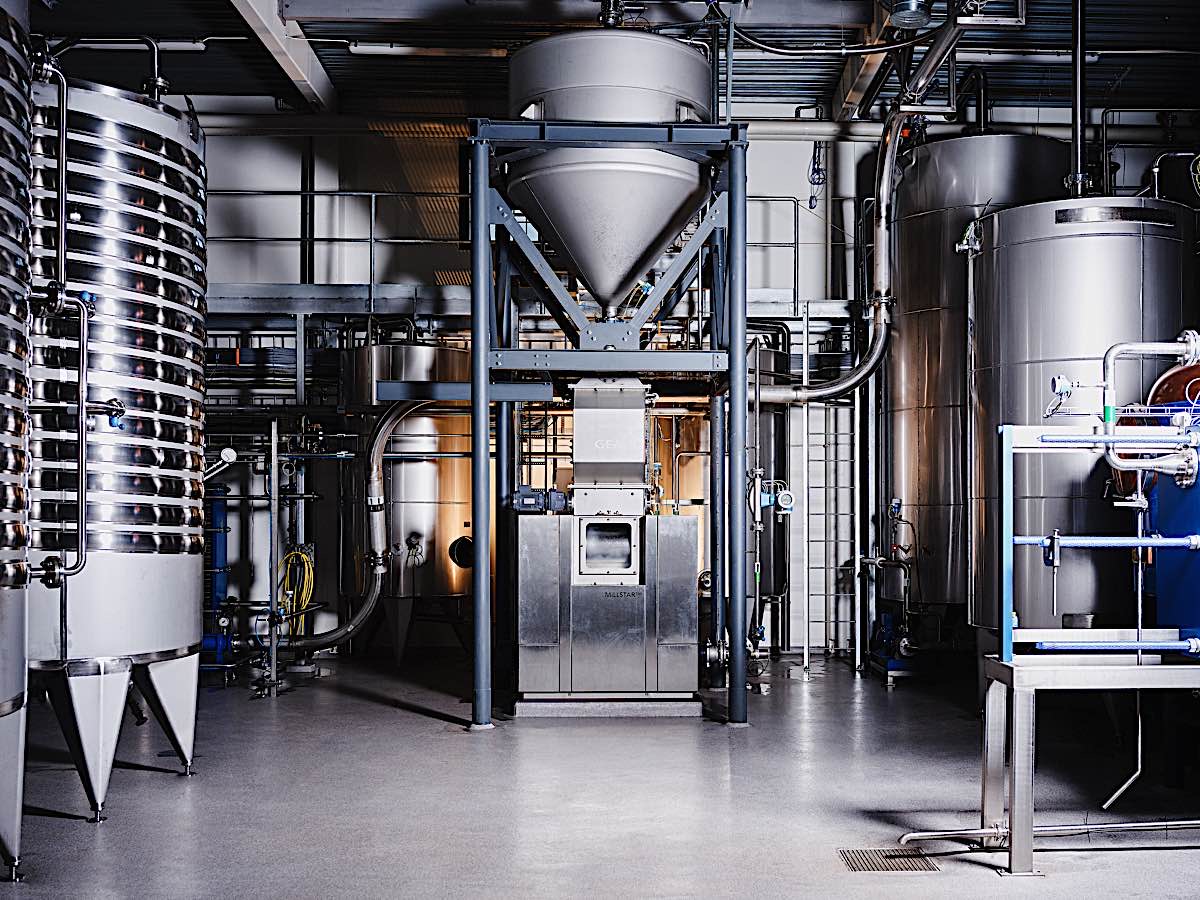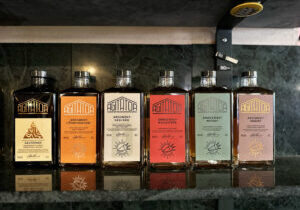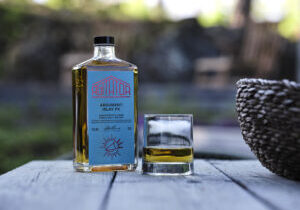
THE ADVANTAGES OF A MILL THAT SOAKS THE MALT.
Milling is the start of the whisky production process. The aim of crushing and milling the malt is to get to the starch in the malt grain, and later to extract it by leaching and converting it into sugars.
The most common mill for whisky is the traditional dry mill. It is normally equipped with several pairs of rollers where the grain is first crushed and then milled.
The problem with dry milling is not so much an inferior result, but that it creates a lot of fine dust, which may be ignited by a spark and start a fire or even set off an explosion. For this reason, dry milling must be done very cautiously. Dry milling also causes an intermediary step, where the crushed grain is handled prior to soaking when mashing.
In Scotland, dry milling is the rule, a tradition going back several centuries.
Ours is a wet mill, where the malt is soaked prior to milling, then crushed with warm brewing water. The crushing produces pieces of husk, coarse crush, and flour. This mixture is called grist and resembles porridge. Since we start adding water as early as in the mill, our mashing process can be said to begin there.
The most concrete benefits with wet milling are:
- Higher extraction. The wet mill produces a larger proportion of fine crush than dry milling, which means that the extract in the grain becomes more accessible.
- Faster process. The time needed to mill a batch is lessened, as intermediate steps necessary in traditional milling can be eliminated.
- Lower energy consumption. Wet milling needs less energy compared to other, more traditional methods.
- Cleaner. The mill cleans itself after each batch.
- Safer. There is no risk of dust explosion, as the raw material is wet when milling. This means that the mill can be placed inside the distillery, without any risk of explosion.
A wet mill is a larger investment, but the obvious benefits make it a more common sight among brewers as well as in the more modern whisky distilleries.









